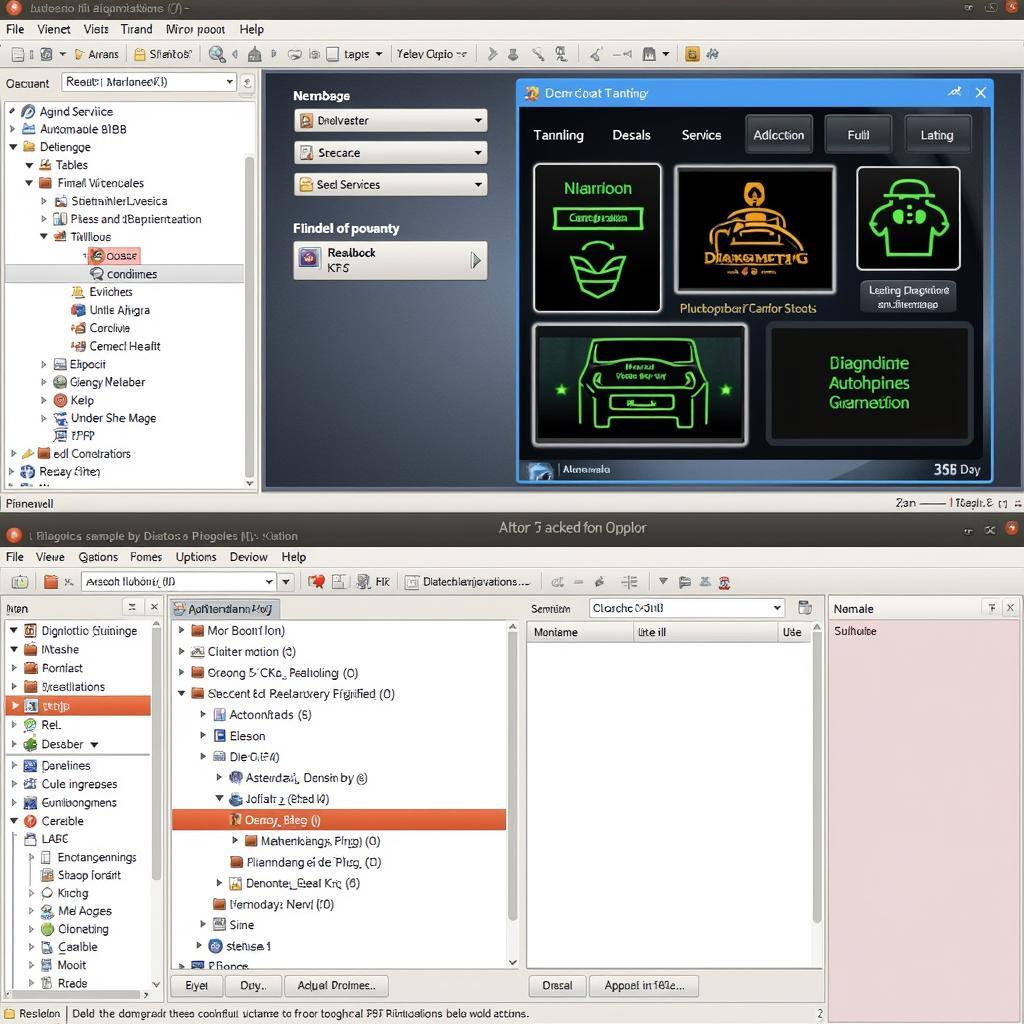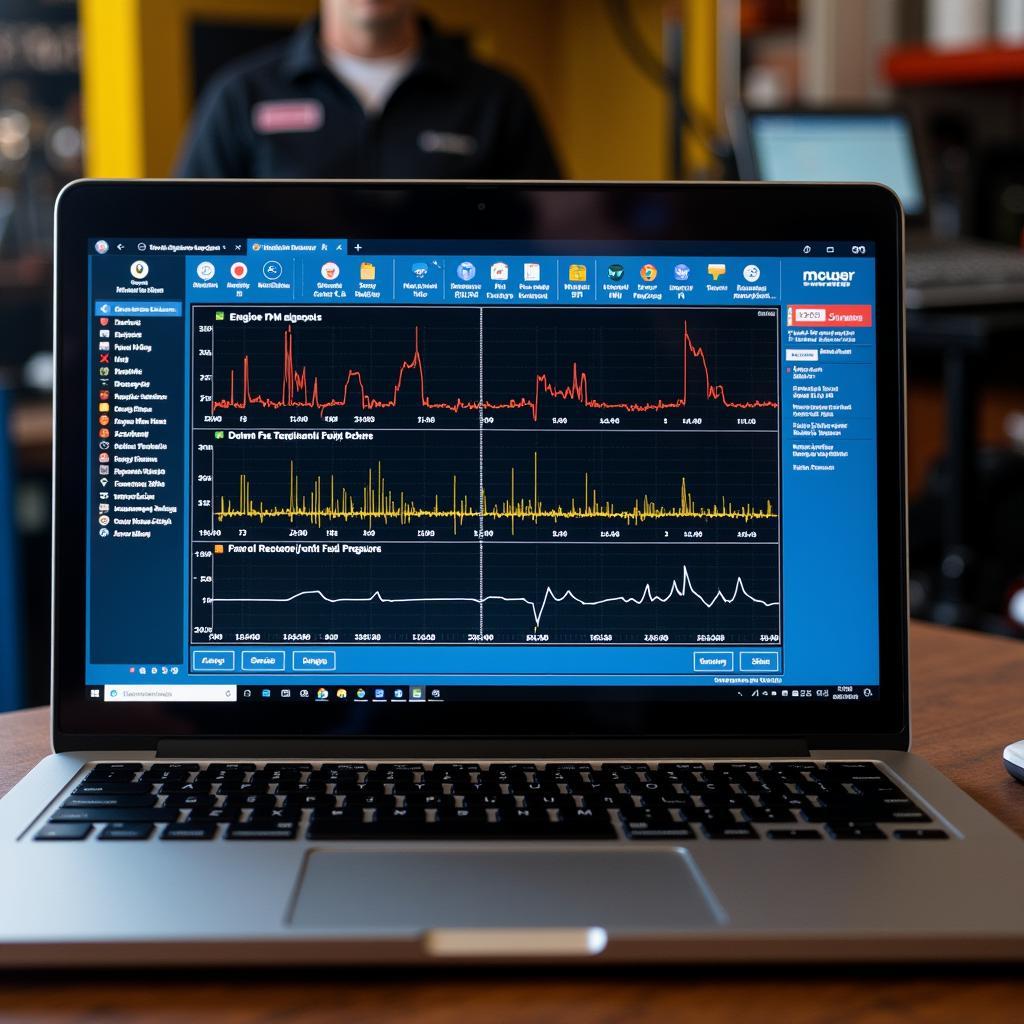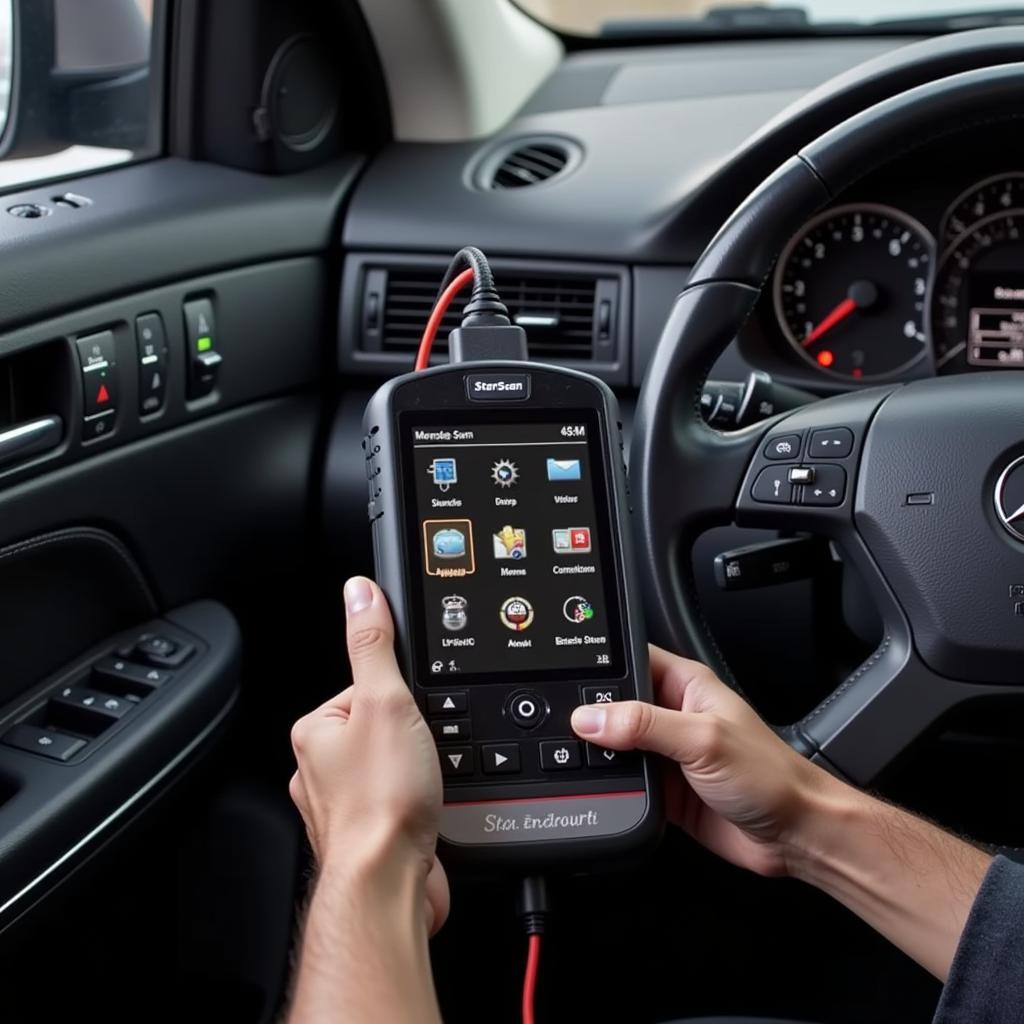Finding the right Light Truck Diagnostic Tool can feel like searching for a needle in a haystack. With so many options on the market, it’s easy to get overwhelmed. This guide will equip you with the knowledge to confidently navigate the world of light truck diagnostic tools, whether you’re a seasoned mechanic or a truck owner looking to empower yourself.
Understanding Your Needs
Before diving into the specifics of diagnostic tools, it’s crucial to assess your individual requirements.
- What type of light truck do you have? Different makes and models often require specific software and connectors.
- What systems are you looking to diagnose? Are you focused on engine performance, transmission issues, or something else entirely?
- What is your budget? Diagnostic tools range from affordable handheld devices to sophisticated professional systems.
[image-1|diagnostic-tools-for-different-truck-models|Different Diagnostic Tools for Different Truck Models|A display of various diagnostic tools laid out on a workbench, each labeled with a specific truck brand or model. For instance, “Ford F-Series,” “Chevy Silverado,” “RAM 1500,” etc. Highlight the variety and model-specific nature of these tools.]
Once you have a clear understanding of your needs, you can start narrowing down your choices.
Types of Light Truck Diagnostic Tools
Light truck diagnostic tools come in various forms, each catering to different levels of expertise and diagnostic needs.
1. Code Readers
Code readers are entry-level tools designed to read and clear basic diagnostic trouble codes (DTCs). They are relatively inexpensive and user-friendly, making them suitable for DIY enthusiasts. However, they offer limited functionality beyond basic code retrieval.
2. OBD-II Scanners
OBD-II scanners are a step up from code readers, offering more advanced features such as live data streaming, freeze frame data, and emissions readiness checks. They provide a more comprehensive view of your truck’s systems, making them suitable for both DIYers and professionals.
[image-2|obd-ii-scanner-in-use|Mechanic Using an OBD-II Scanner|A close-up shot of an OBD-II scanner plugged into a light truck’s diagnostic port. The scanner’s screen displays live data, such as engine RPM, coolant temperature, and oxygen sensor readings. This image should emphasize the real-time diagnostic capabilities of these tools.]
3. Professional-Grade Diagnostic Scanners
Professional-grade scanners are the most powerful and feature-rich tools available. They offer bi-directional control, advanced coding and programming capabilities, and access to manufacturer-specific systems. These tools are primarily used by dealerships and professional mechanics due to their complexity and high cost.
[bosch kts truck diagnostic tool]
Key Features to Consider
When choosing a light truck diagnostic tool, consider the following features:
- Vehicle Coverage: Ensure the tool is compatible with your truck’s make, model, and year.
- Software Updates: Regular software updates are crucial for maintaining compatibility with the latest vehicle models and technologies.
- User Interface: Look for a tool with an intuitive and easy-to-navigate interface.
- Data Logging and Reporting: The ability to log and report data can be invaluable for tracking down intermittent problems.
- Technical Support: Access to reliable technical support can be crucial, especially for complex issues.
[image-3|mechanic-analyzing-diagnostic-data-on-laptop|Analyzing Diagnostic Data| A mechanic sits at a workbench with a laptop displaying various graphs and data logs. The laptop is connected to a professional-grade diagnostic scanner, showcasing the advanced data analysis capabilities of these tools.]
Common Light Truck Issues Diagnosed with Diagnostic Tools
Diagnostic tools play a vital role in identifying and resolving a wide range of light truck problems, including:
- Check Engine Light: Diagnosing the underlying cause of a check engine light, such as a faulty oxygen sensor or a misfire.
- Transmission Problems: Identifying issues with the transmission, such as slipping gears or rough shifting.
- ABS Problems: Diagnosing problems with the anti-lock braking system, such as faulty wheel speed sensors.
- Airbag System Faults: Detecting and troubleshooting issues with the airbag control module or sensors.
[diagnostic tool semi]
“Investing in a quality diagnostic tool is like having a window into your truck’s soul,” says John Smith, a veteran mechanic with over 20 years of experience. “It allows you to understand what’s going on under the hood and make informed decisions about repairs.”
Conclusion
Choosing the right light truck diagnostic tool is essential for efficient troubleshooting and repair. By carefully considering your needs, understanding the different types of tools available, and focusing on key features, you can confidently select the perfect tool to keep your truck running smoothly.
Need help choosing the perfect light truck diagnostic tool? Contact ScanToolUS today at +1 (641) 206-8880 or visit our office at 1615 S Laramie Ave, Cicero, IL 60804, USA. Our team of experts can guide you towards the best solution for your specific requirements.



